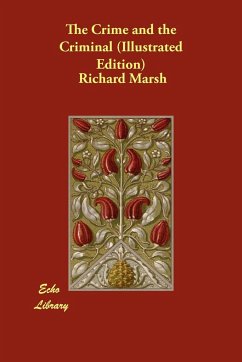Richard Marsh (1857-1915) was the pseudonym used by Richard Bernard Heldmann, a bestselling and prolific author of the late 19th century and Edwardian period. Born in North London, he began publishing fiction during 1880 in the form of boys' school and adventure stories for magazines, significantly for the quality boys' weekly Union Jack associated with the authors G A Henty (1832-1902) and W H G Kingston (1814-80). Henty promoted Heldmann to co-editor in October 1882 but his association with the magazine ended abruptly in June 1883. After this, Heldmann published no further fiction under his own name and began using the pseudonym Richard Marsh a few years later, the reason being he had been sentenced to 18 months hard labour in April 1884 for issuing a series of forged cheques in Britain and France during 1883. The pseudonym was adopted on his release from jail and his work began appearing in literary periodicals in 1888, with two novels published in 1893. Marsh published numerous works during the 1890s and into the early years of the 20th century, with several novels appearing posthumously following his death in 1915. His greatest commercial success came with one of his earlier novels, The Beetle (1897), a supernatural thriller about a mysterious oriental who pursues a British politician to London where he wreaks havoc with his powers of hypnosis and shape-shifting. In some respects the novel bears a resemblance to other novels of the same period, notably Bram Stoker's Dracula which was published in the same year, George du Maurier's Trilby, and Sax Rohmer's Fu Manchu novels. The Beetle was initially far more popular than Dracula, outselling it six times over, and Marsh had other successes in the horror genre, such as The Goddess: A Demon (1900) and The Joss: A Reversion (1901). An important element of many of his novels, including The Beetle, is investigation of mystery and notable among his crime and detection novels are Philip Bennion's Death (1897) and The Datchet Diamonds (1898). Beginning with a chance encounter on a train, The Crime and the Criminal (1897) is a tightly plotted mystery packed with intrigue, blackmail, nefarious characters, and confounding clues, making for an engrossing tale to be relished by fans of classic mystery and detective fiction. Like The Beetle, the book is narrated by multiple characters. Reprinted from the American New Amsterdam Book Company edition of 1899 which includes two full-page illustrations by British artist and illustrator Harold Hume Piffard (1867-1938).








